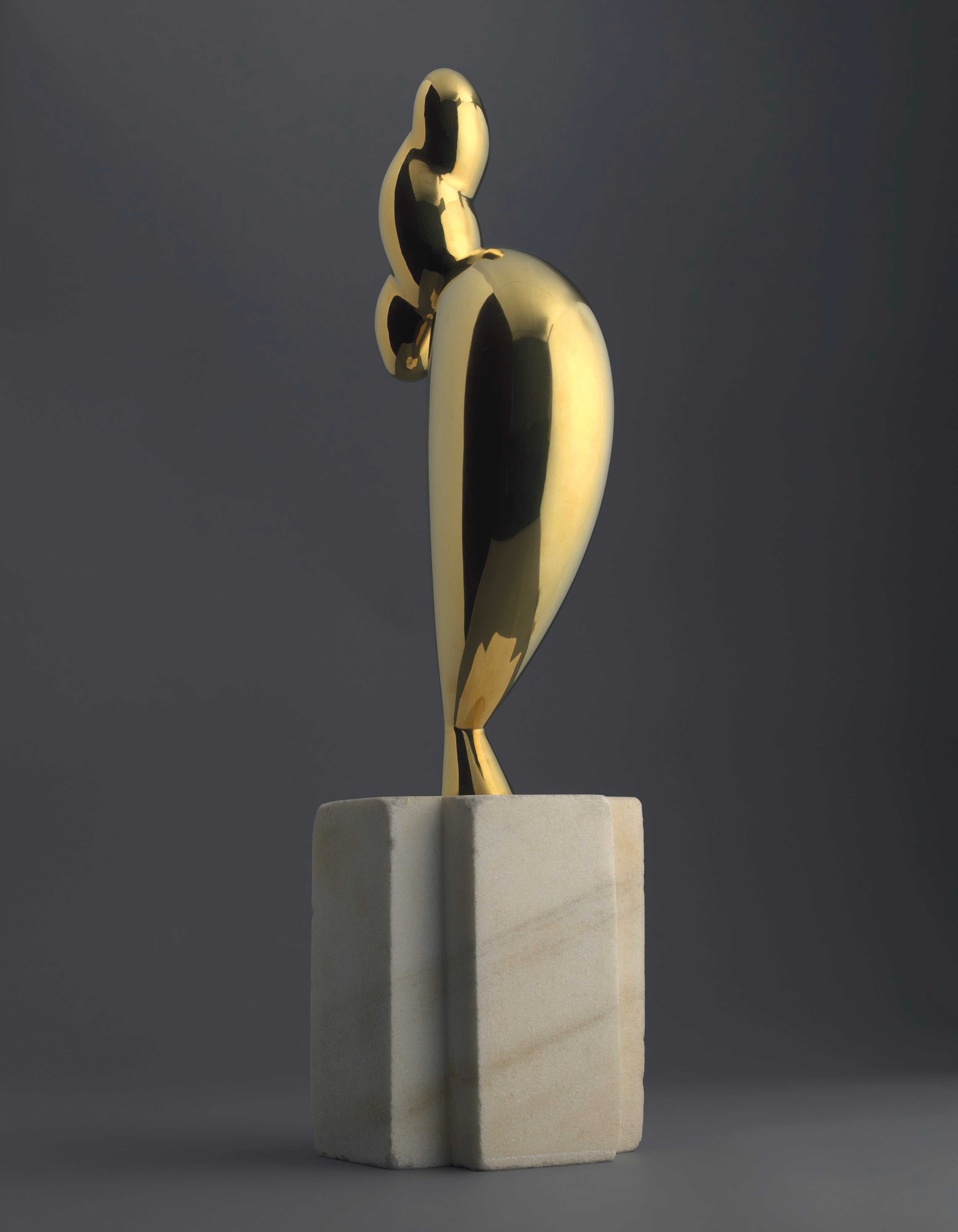
Christie’s Impressionist and Modern sale in New York on Tuesday evening, May 15, could perhaps be best summed up in the sale of one of its premier lots, Constantin Brancusi’s La jeune fille sophistiquée (Portrait de Nancy Cunard) (1932). Estimated in the region of $70 million, the unique bronze cast ultimately sold to a phone bidder handled by co-chairman of Postwar and Contemporary Art Loïc Gouzer for a record-setting price of $71 million. (Final prices, unless noted, include premiums; pre-sale estimates do not.)
And yet auctioneer Adrien Meyer spent a fair portion of the bidding looking toward the auction house’s skybox, seemingly hoping to coax another bid or two out of a buyer invisible from press row, to no avail. Like living out a quiet life married to your high school sweetheart, it was a happy result that also left you wondering what more there might have been out there.
So it went for the auction as a whole. Against a pre-sale estimate that hovered around $437.8 million, it raked in $415.8 million, set two world-auction records, and delivered an impressive 89 percent sell-through rate. (Seven lots—roughly $98.35 million of the total—had been guaranteed before the sale: approximately $15 million marked in the catalogue and around $83 million more accruing from additional secured lots announced from the rostrum.)
Withdrawn from the sale: Pablo Picasso’s Le Marin (1943). © 2018 Estate of Pablo Picasso / Artists Rights Society (ARS), New York. Courtesy of Christie’s.
However, three works were withdrawn from the sale between last Monday and tonight’s first bid. Meyer announced at the start of the evening’s proceedings that a Chagall slated to be the seventh lot had exited the offering pool, joining scandal-rocked casino magnate and mega-collector Steve Wynn’s two star Picasso works, both pulled last week. Since the house had guaranteed Le Marin (1943) and Femme au chat assise dans un fauteuil (1964)—and secured third-party guarantees for each—the evening’s haul would have risen by something in the neighborhood of $105 million had they actually reached the auction block. This could have pushed the sales final total from healthy to extravagant if fate had moved in a different direction.
Still, it would be unfair to fixate on counterfactuals. Although we should always be cautious about drawing blanket comparisons between any two auctions based on their shared name, this year’s edition of the Impressionist and Modern sale easily eclipsed last year’s total of $289 million. It also handily beat out last night’s evening auction of the same category at rival Sotheby’s, which raised only $307.4 million in total—over half of it thanks to the $157 million sale of Amedeo Modigliani’s Nu couché (sur le côté gauche) (1917).
Joan Miró’s Femme entendant de la musique (1945). Courtesy of Christie’s.
In comparison, bidding and sales were much more evenly distributed across Christie’s slate of offerings. Roughly one-third of the lots that reached the block sold above their respective high estimates, once fees were factored in. Aside from the Brancusi bronze, Kazimir Malevich’s Suprematist Composition (1916) sold for $85.8 million to Christie’s-rainmaker-turned-dealer Brett Gorvy of Lévy Gorvy, who was bidding in the room with his cell phone glued to one ear. Another expected standout, Joan Miró’s Femme entendant de la musique (1945) brought nearly $21.7 million, or roughly 50 percent above its high estimate of $15 million.
Edouard Manet’s L’Italienne (1860). Courtesy of Christie’s.
And while competition for the premier lots never reached feeding-frenzy levels, there were healthy swells of activity for what buyers must have identified as undervalued gems. Among these were Edouard Manet’s L’Italienne (1860), which Andrew Fabricant of Richard Gray Gallery secured on behalf of a remote client at a price of $11 million—more than twice its estimate of $5 million. Picasso’s Deux nus (1962) went for $2.8 million, against a pre-sale estimate of $700,000 to $1 million (to a phone bidder proxied by Christie’s deputy chairman of American Art Eric Widing, who reprised his role for the same buyer on a $7.1 million Chagall a handful of lots later). And Egon Schiele’s Stehende Rückenakt (1910) more than tripled its high estimate of $1 million, landing at $3.6 million.
Pablo Picasso’s Deux nus (1962). Courtesy of Christie’s.
As always, the question remains how much we should read into the overall Impressionist and Modern market, or the art market as a whole, based on healthy results for a sale of 37 works in an intelligently managed auction. Post-sale chatter attributed the results to quality lots estimated well, but it felt like many, if not most, legitimate buyers were carefully choosing their spots. If that read is correct, then we should expect solid totals in the coming day sales for the category as well. But only time and dollar signs will say for sure.